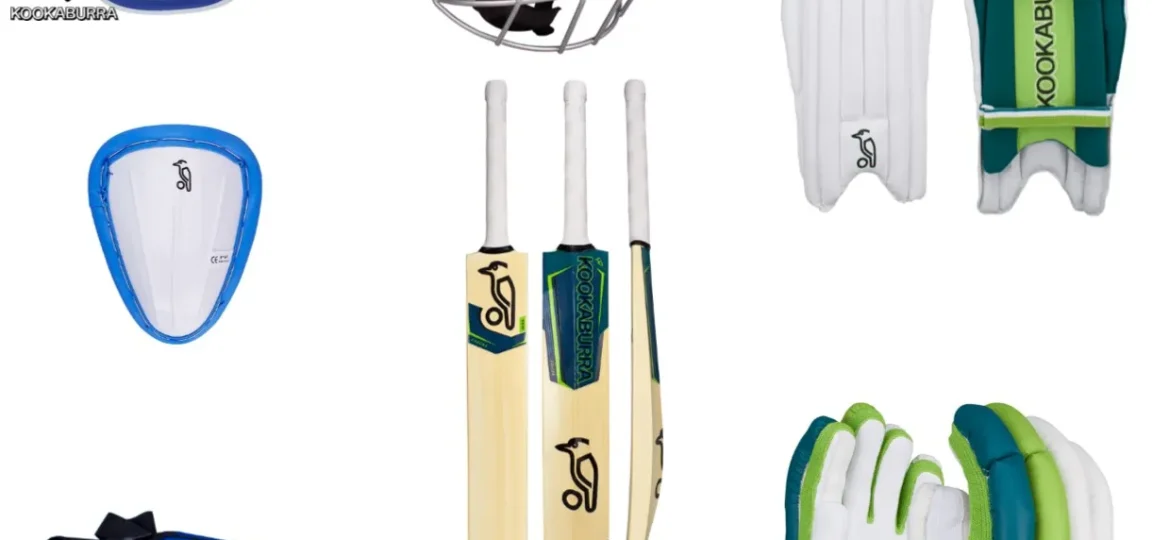- No products in the cart.

Cricket is more than just a game of bat and ball; it is a sport that demands agility, strategy, and above all, safety. Whether you are a professional player, a weekend enthusiast, or a beginner, protecting yourself from injuries is non-negotiable. Cricket involves fast-moving balls, aggressive bowling, and high-speed collisions, making safety equipment a must rather than a choice. In this article, we will explore the essential cricket safety gear that every player must use during matches and practice sessions.
Why Safety Equipment in Cricket is Crucial
In cricket, injuries can range from minor bruises to severe fractures. A cricket ball can travel at speeds exceeding 90 mph, and without proper protection, even an experienced player can suffer from concussions, broken fingers, or facial injuries. According to sports injury research, players who use complete protective gear are significantly less likely to face long-term damage. Safety equipment ensures that players can focus on performance, strategy, and enjoyment without constantly worrying about potential injuries.
Moreover, modern cricket has become more competitive, with faster bowlers, agile fielders, and aggressive batting styles. This intensity makes protective equipment mandatory. Players who neglect safety gear often regret it after sustaining injuries that could have been easily avoided with the right equipment.
1. Cricket Helmet – The Ultimate Head Protector
One of the most critical pieces of cricket safety equipment is the helmet. Designed to protect the head, face, and jaw, helmets are non-negotiable, especially for batsmen facing fast bowlers and close-in fielders like short leg and silly point.
Features of a Good Cricket Helmet
- Strong Outer Shell: Typically made from high-impact-resistant materials like fiberglass or carbon fiber to absorb shock.
- Inner Padding: Provides comfort and additional protection by dispersing the force of impact.
- Grill/Face Guard: Shields the face from direct impact while maintaining visibility.
- Ventilation: Ensures airflow to prevent overheating during long matches.
Helmets are crucial for preventing severe injuries like concussions, skull fractures, and facial trauma. Even if you are a medium-pace bowler or a lower-order batsman, wearing a helmet while batting or facing bouncers is non-negotiable.
2. Batting Pads – Safeguarding the Legs
Batting pads are essential for protecting the shins, knees, and thighs from fast deliveries. Cricket balls are hard and can cause significant injuries when they strike unprotected legs.
Importance of Batting Pads
- Impact Absorption: High-density foam and reinforced materials absorb shock, reducing the risk of fractures.
- Flexibility: Modern pads allow mobility, letting players move comfortably without compromising protection.
- Full Coverage: Pads extend from the knee down to the ankle, ensuring maximum protection against direct hits.
Pads are particularly critical against fast bowlers who can deliver balls at extreme speeds. Even a deflected ball hitting an unprotected shin can result in bruises, swelling, or fractures.
3. Gloves – Protecting Hands and Fingers
Cricket gloves are designed to shield fingers and hands from injuries caused by high-speed deliveries and accidental bat collisions. Fielders, wicketkeepers, and batsmen all rely on gloves for protection.
Key Features of Cricket Gloves
- Finger Protection: Most gloves have reinforced fingers with high-density padding or finger guards.
- Palm Cushioning: Reduces impact when catching or striking the ball.
- Grip Enhancement: Gloves also improve the hold on the bat, reducing the chance of it slipping mid-swing.
Without gloves, players risk finger fractures, dislocations, and painful bruises. Wicketkeepers, in particular, are exposed to high-velocity balls and require specialized gloves with extra padding and webbing between the fingers for catching.
4. Abdominal Guard – Safety Where It Matters Most
An abdominal guard, commonly called a “box” or “cup,” is vital for male cricketers to protect against potentially life-threatening injuries. Cricket balls hitting the groin can cause severe trauma, making this equipment mandatory.
Why the Abdominal Guard is Non-Negotiable
- Impact Protection: The hard cup shields sensitive areas from fast balls and accidental hits.
- Comfortable Fit: Modern guards are designed for mobility and can be worn under trousers without hindering movement.
- Prevention of Serious Injuries: Even a single direct hit without protection can lead to fractures, internal injuries, and long-term discomfort.
For women players, pelvic protection is equally essential, often using padded shorts or pelvic guards designed for comfort and security.
5. Thigh Guards and Arm Guards – Additional Protection for Key Areas
While batting pads protect legs from the knee down, thigh guards and arm guards protect the upper leg and forearms. These areas are often targeted by fast bowlers or can be injured when the ball deflects.
Benefits of Thigh and Arm Guards
- Thigh Guards: Protect against impact on the quadriceps and upper leg, especially for front-foot shots.
- Arm Guards: Shields the forearm from balls hitting at awkward angles, reducing bruises and fractures.
- Lightweight Design: Modern guards are lightweight and do not restrict movement, allowing players to react quickly.
For young players, wearing these guards can prevent injuries during practice sessions, where repeated hits can cause cumulative damage.
6. Wicketkeeping Pads and Gloves – Specialized Safety Gear
Wicketkeepers face unique risks, catching balls at high speeds with minimal reaction time. They need specialized gloves with reinforced padding, finger protection, and webbing to catch balls securely.
Additional Wicketkeeping Safety Measures
- Inner Gloves: Some wicketkeepers wear inner gloves under their main gloves for extra cushioning.
- Thigh Pads: Protects upper legs during crouching and diving.
- Helmet with Face Guard: Essential when standing up to the stumps against medium or fast bowlers.
Wicketkeeping without proper safety gear increases the risk of finger dislocations, bruised palms, and head injuries.
7. Shoes—Foundation of Safety and Performance
Cricket shoes may seem trivial, but they play a crucial role in injury prevention. Proper cricket shoes provide grip, stability, and cushioning, preventing slips, sprains, and joint injuries.
Features of Good Cricket Shoes
- Spikes for Grip: Ensure traction on grass and synthetic pitches, reducing the risk of falls.
- Ankle Support: Helps prevent sprains and twisted ankles during running or fielding.
- Shock Absorption: Protects knees and joints from repetitive impact during bowling and batting.
Even a minor slip can lead to severe injuries, especially during quick singles or diving catches. The right footwear can make all the difference.
Cricket is inherently risky, but with the right safety equipment, players can enjoy the game without fearing injury. Helmets, gloves, pads, guards, and shoes are all non-negotiable gear that every player must have during matches and practice. Skipping any of these pieces can result in avoidable injuries that may impact long-term performance.
Investing in high-quality safety equipment is not just about compliance; it’s about protecting your body, extending your cricket career, and playing with confidence. Whether you are a seasoned professional or a passionate amateur, your health and safety should always be your top priority on the field.
Conclusion
Safety in cricket is not optional. The combination of a helmet, batting pads, gloves, abdominal guard, thigh and arm guards, wicketkeeping gear, and proper footwear forms the foundation of injury prevention. These pieces of equipment are designed to absorb impact, reduce the risk of fractures, and safeguard the body’s most vulnerable areas. By wearing all recommended safety gear, cricket players can focus on honing their skills, enjoying the game, and performing at their best without fear of injury. Remember, one moment of negligence can lead to long-term damage, so gear up every time you step onto the field.
FAQs
1. Can I play cricket without a helmet if I am a slow bowler?
No. Helmets are essential for all batsmen facing any type of delivery, regardless of bowler speed. Even a deflection from a slower ball can cause head injuries.
2. Are wicketkeeping gloves different from batting gloves?
Yes. Wicketkeeping gloves are heavily padded and designed for catching fast balls, while batting gloves focus on grip and finger protection during batting.
3. Is an abdominal guard necessary for female players?
Yes. Female players use pelvic guards or padded shorts to protect sensitive areas during gameplay.
4. Can I use regular shoes instead of cricket shoes?
Using non-specialized shoes increases the risk of slips, sprains, and joint injuries. Cricket shoes provide grip, stability, and shock absorption designed for the sport.
5. How often should I replace my cricket safety equipment?
It depends on usage, but helmets, gloves, and guards should be inspected regularly for cracks, wear, and padding integrity. Replace them immediately if damaged.

